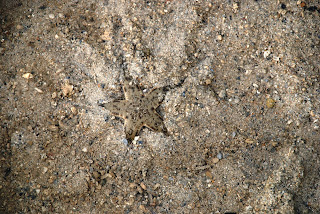








I used our free day to relax a little longer and listened to the NCAA basketball play-offs on the internet—the local internet speed was too slow to watch the video. Then off to shop and ramble. The bus and subway (MRT) systems make it easy to get around the city and even the countryside—a taxi can be used when in a rush. My favorite places to go are Little India and Chinatown. In each setting, I found Indian temples in the midst of the districts. Historically, when the British brought in workers from India to join workers brought in from China, they all lived initially in the same area of Singapore (probably intentionally clustered to allow better surveillance and control by the British). Later, the Indian population settled another area of their own—hence active Indian temples in both settings. One of the photos shows the contrast of old—older cultural/religious heritage against a backdrop of moderninity and secular development.
Singapore holds a wide range of religious heritage and active practice. That reflects centuries of melting together of many cultures. There are frequently encountered places of worship scattered thru the city including on area of worship and prayer alongside our local bus stop. Here people of Buddhist faith burned money—“Hell notes” that were sent by burning to ancestors for use in the afterlife. There are many Christian churches reflecting strong missionary presences thru past centuries.
I searched for items to bring home to family—Singapore has everything you could want to buy and probably always cheaper. I find it hard to find items that reflect the region without being touristy—because Singapore’s identity is really a mixed identity of cultures. The citizens seem proud to be Singaporeans but there is no craft or item that reflects Sg that doesn’t more strongly reflect some subculture of Singapore.
I found the equivalent of a “flea mall” or grouped individual salesmen at tables set up within a mall. The items were enticing just like a visit to such a sale back home. I limited myself to the purchase for Dr. Dan of what the salesman said was a “new species” and included a rubber rat stuffed into a tortoise shell as a jest. I thought that Dr. Rittshof deserved the right to discover a new species and become famous. (The shell was held in the cupped hands while praying in the Chinese faith—coins were rattled inside during the prayer and then tossed to the floor where they were “read” to foretell your future.
A dinner in an upscale Chinese restaurant closed the evening and early to bed.
Singapore holds a wide range of religious heritage and active practice. That reflects centuries of melting together of many cultures. There are frequently encountered places of worship scattered thru the city including on area of worship and prayer alongside our local bus stop. Here people of Buddhist faith burned money—“Hell notes” that were sent by burning to ancestors for use in the afterlife. There are many Christian churches reflecting strong missionary presences thru past centuries.
I searched for items to bring home to family—Singapore has everything you could want to buy and probably always cheaper. I find it hard to find items that reflect the region without being touristy—because Singapore’s identity is really a mixed identity of cultures. The citizens seem proud to be Singaporeans but there is no craft or item that reflects Sg that doesn’t more strongly reflect some subculture of Singapore.
I found the equivalent of a “flea mall” or grouped individual salesmen at tables set up within a mall. The items were enticing just like a visit to such a sale back home. I limited myself to the purchase for Dr. Dan of what the salesman said was a “new species” and included a rubber rat stuffed into a tortoise shell as a jest. I thought that Dr. Rittshof deserved the right to discover a new species and become famous. (The shell was held in the cupped hands while praying in the Chinese faith—coins were rattled inside during the prayer and then tossed to the floor where they were “read” to foretell your future.
A dinner in an upscale Chinese restaurant closed the evening and early to bed.













































